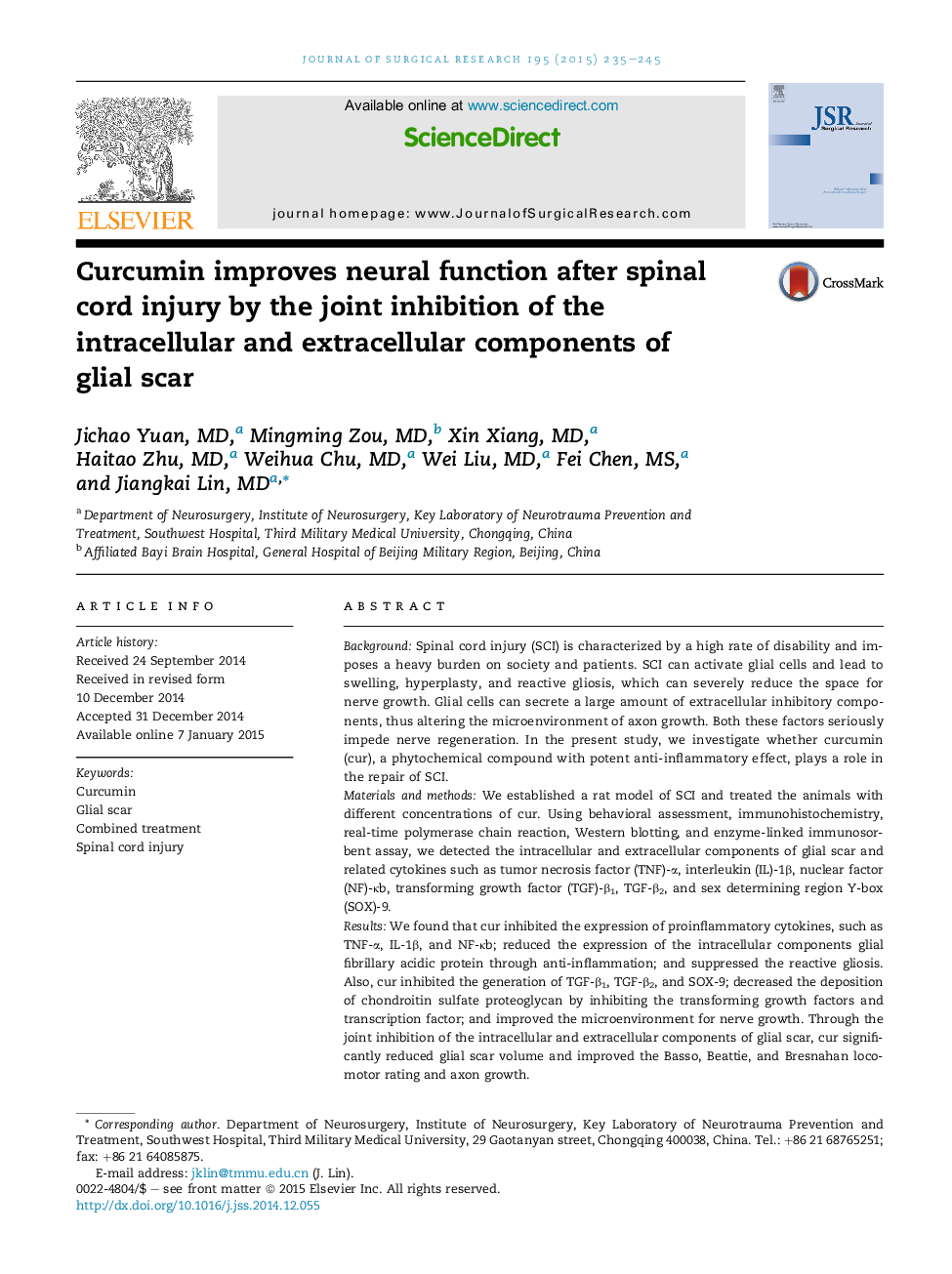| Article ID | Journal | Published Year | Pages | File Type |
|---|---|---|---|---|
| 4299894 | Journal of Surgical Research | 2015 | 11 Pages |
BackgroundSpinal cord injury (SCI) is characterized by a high rate of disability and imposes a heavy burden on society and patients. SCI can activate glial cells and lead to swelling, hyperplasty, and reactive gliosis, which can severely reduce the space for nerve growth. Glial cells can secrete a large amount of extracellular inhibitory components, thus altering the microenvironment of axon growth. Both these factors seriously impede nerve regeneration. In the present study, we investigate whether curcumin (cur), a phytochemical compound with potent anti-inflammatory effect, plays a role in the repair of SCI.Materials and methodsWe established a rat model of SCI and treated the animals with different concentrations of cur. Using behavioral assessment, immunohistochemistry, real-time polymerase chain reaction, Western blotting, and enzyme-linked immunosorbent assay, we detected the intracellular and extracellular components of glial scar and related cytokines such as tumor necrosis factor (TNF)-α, interleukin (IL)-1β, nuclear factor (NF)-κb, transforming growth factor (TGF)-β1, TGF-β2, and sex determining region Y-box (SOX)-9.ResultsWe found that cur inhibited the expression of proinflammatory cytokines, such as TNF-α, IL-1β, and NF-κb; reduced the expression of the intracellular components glial fibrillary acidic protein through anti-inflammation; and suppressed the reactive gliosis. Also, cur inhibited the generation of TGF-β1, TGF-β2, and SOX-9; decreased the deposition of chondroitin sulfate proteoglycan by inhibiting the transforming growth factors and transcription factor; and improved the microenvironment for nerve growth. Through the joint inhibition of the intracellular and extracellular components of glial scar, cur significantly reduced glial scar volume and improved the Basso, Beattie, and Bresnahan locomotor rating and axon growth.ConclusionsOur data support a role for curcumin in promoting neural function recovery after SCI by the joint inhibition of the intracellular and extracellular components of glial scar, providing an important strategy for treating SCI.
